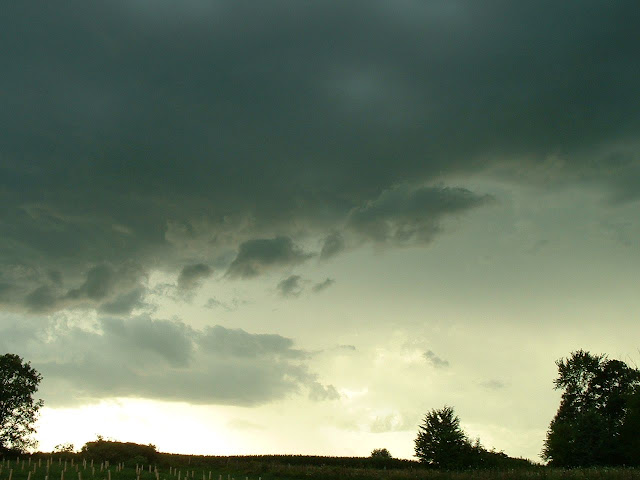It hasn't rained for weeks and weeks, and the Government (c) says that we're back into drought. Lack of water can stress the new trees, so we've been in the orchard every week giving them drinks of water we pump out of the pond.
At first, we placed 50 gallon plastic barrels in the bed of the pickup and dragged garden hoses from tree to tree. However, the small hose diameter under gravity and little head made this method slow going. Next, we found a used 250 gallon plastic tote which we placed in the red wagon and used a flexible 2" pump discharge hose to direct the flow. While this allowed us to carry and deposit more water, it was still clumsy and required two people to operate.
The third iteration mounts the 250 gallon tote to a fork lift attachment on the three point hitch. Using a stiff 2" pump intake hose, a short piece of PVC pipe, a segment of aluminum pipe salvaged from an old patio umbrella, a pulley, some rope, a little bit of string, and some miscellaneous hardware, we developed a one man rig. If you load it with too much water, the front tires lift off of the ground, but that's nothing a bucket full of aggregate can't resolve. The result, though, is that we've cut the number of manhours associated with this task by 50%, leaving us with more time to perform some other chore.
At first, we placed 50 gallon plastic barrels in the bed of the pickup and dragged garden hoses from tree to tree. However, the small hose diameter under gravity and little head made this method slow going. Next, we found a used 250 gallon plastic tote which we placed in the red wagon and used a flexible 2" pump discharge hose to direct the flow. While this allowed us to carry and deposit more water, it was still clumsy and required two people to operate.
The third iteration mounts the 250 gallon tote to a fork lift attachment on the three point hitch. Using a stiff 2" pump intake hose, a short piece of PVC pipe, a segment of aluminum pipe salvaged from an old patio umbrella, a pulley, some rope, a little bit of string, and some miscellaneous hardware, we developed a one man rig. If you load it with too much water, the front tires lift off of the ground, but that's nothing a bucket full of aggregate can't resolve. The result, though, is that we've cut the number of manhours associated with this task by 50%, leaving us with more time to perform some other chore.





















































